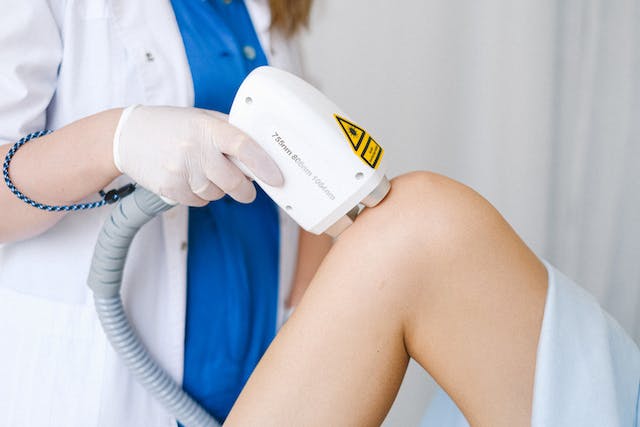Unique Ways Medical Devices Are Becoming Safer & More Advanced

A hallmark of progress in the ever-changing healthcare industry is the unwavering pursuit of innovation. Medical device technology is one field where this innovation is clearly visible. These crucial instruments for patient diagnosis, treatment, and follow-up have undergone substantial improvements in recent years, improving their effectiveness and safety. This article will look at how medical technology is becoming safer and more sophisticated, ushering in a new era of healthcare innovation.
1. Integration of Artificial Intelligence (AI) in Diagnostic Devices
The use of artificial intelligence (AI) in diagnostic tools is among the most innovative developments in medical technology. Errors could occur because traditional diagnostic techniques frequently rely on human interpretation of the data. However, medical equipment can now evaluate complicated data sets with unmatched speed and accuracy due to the introduction of AI. AI-powered imaging systems can identify minute anomalies in medical scans that could go undetected by the human eye. This greatly improves patient outcomes by increasing diagnostic precision and ensuring early disease detection.
2. Enhanced Connectivity for Remote Monitoring
The development of medical devices with improved connectivity features has surged because of the growing emphasis on telehealth and remote patient monitoring. Healthcare providers can access critical patient data in real-time because of these devices’ seamless integration with healthcare systems. These advancements allow medical professionals to remotely monitor patients, enabling prompt treatments and individualized care plans. Examples of these developments include smart wearables that continuously monitor heart rate and activity levels and implantable devices that communicate data about internal physiological parameters.
3. Implementation of 3D Printing Technology in Prosthetics
The development of 3D printing technology has completely changed how many medical equipment is manufactured, especially prostheses. Conventional prostheses had restricted functioning and were frequently generic. Nonetheless, 3D printing makes it possible to create prosthetics that are specifically designed for each person, considering their distinctive demands and anatomy. This improves patient happiness and general well-being in addition to making prostheses more comfortable and functional.
4. Sensor Technology for Drug Delivery Systems
The inclusion of sensor technologies into drug delivery systems provides a huge leap forward in medication management. Sensing-enabled smart drug delivery systems can track patients’ compliance with treatment plans, guaranteeing that recommended dosages are taken on schedule. Additionally, these gadgets can offer insightful information about how patients react to drugs, allowing medical professionals to modify treatment regimens on the go. This boosts overall therapeutic efficacy and improves medication adherence, particularly for chronic conditions that require strict adherence.
5. Nanotechnology for Targeted Therapies
When it comes to the creation of medical devices, nanotechnology has changed everything, especially in the field of targeted therapy. To reduce the possibility of adverse effects and maximize therapeutic efficacy, medications can be delivered directly to target cells or tissues via nano-sized particles. Targeted therapies, which selectively attack cancer cells while preserving healthy tissues, can be very helpful in the treatment of disorders like cancer. This precision in drug administration makes this possible. The incorporation of nanotechnology into medical devices heralds a paradigm shift in therapeutic approaches, with more successful and minimally intrusive interventions anticipated.
6. Biocompatible Materials in Implantable Devices
Biocompatible materials for use in implantable devices have been developed because of advancements in materials science. Because of their complete integration with the body, these materials reduce the possibility of rejection or unfavorable reactions. For example, biocompatible coatings on implantable sensors or devices guarantee the devices’ long-term operation by lowering the risk of inflammatory responses. This prolongs their lives and enhances their safety profile, which lowers the frequency of replacements and related surgical procedures required for implantable medical devices.
7. Integration of ERP Systems for Streamlined Operations
The incorporation of Enterprise Resource Planning (ERP) systems is another significant development in the field of medical devices. Supply chain management, inventory control, production scheduling, and regulatory compliance are just a few of the areas where ERP software makes it easier to operate the medical device manufacturing process smoothly. Medical device manufacturers can save expenses, enhance production, and ensure regulatory compliance by implementing top-rated ERP software for medical devices from a respected provider. Process simplification raises productivity while also improving overall safety and quality of medical equipment, which benefits patient outcomes and satisfaction.
Conclusion
Medical device technology is changing dramatically, with an emphasis on improving safety and developing technological capabilities. Every advancement ushers in a new era of patient-centered, efficient, and personalized healthcare, from the use of biocompatible materials in implanted devices to the incorporation of artificial intelligence in diagnostics. Medical devices are expected to play an increasingly more significant role in enhancing patient outcomes and transforming the practice of healthcare in the future because of the synergy between technology and medicine.